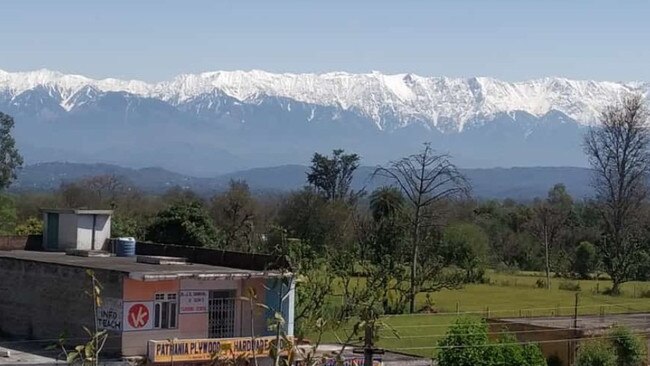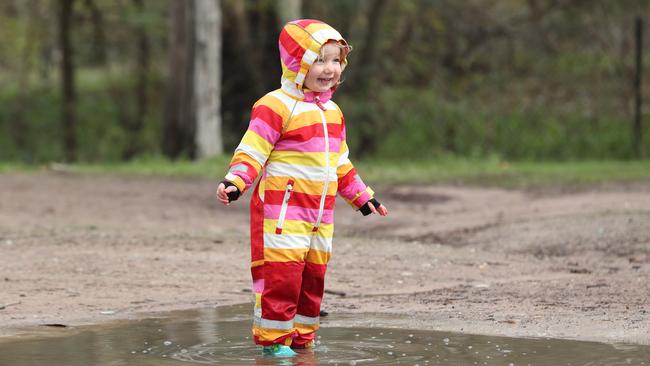Take a deep breath: COVID-19 lockdown is helping SA’s environment as air pollution plunges and more of us get back to nature
Amid all the doom and gloom, there’s at least one beneficiary of COVID-19 lockdowns – our environment. SA’s air quality is up to 40 per cent better and many more families are visiting parks for some good clean fun.

- KI fires: Conservationists band together to ensure species’ survival
- Hibernation: More fun things to do while living in lockdown
Our air is much cleaner, we’ve had a 40 per cent drop in vehicle traffic and national parks have more than double the number of people heading into the great outdoors.
Social distancing restrictions brought on by COVID-19 have had a crippling effect on business, but the state’s environment has been a big winner over the past two months.
Also among positive flow-on effects is an increasing number of people choosing to get around by bike and reports of birds being more prolific in their movements – though experts believe that might simply come down to people paying more attention to their natural surroundings.
The EPA’s principal scientific officer for air quality, Pushan Shah, has analysed key indicators of air pollution to gauge the coronavirus shutdown’s impact.
He found there was a 20-40 per cent improvement at Adelaide-based monitoring stations between the seven weeks to April 23 in 2019, and the same period this year.
“It was very clear that the COVID-19 restrictions meant a drop in motor vehicle traffic, especially at peak times,” Dr Shah said.
“This pollution related to traffic will come back. I don’t know what normal will be in the future because nobody can say, but as the government relaxes restrictions, more motor vehicles will come back onto the roads and there will be more traffic-related pollution.”
Transport Department data demonstrated the clear correlation between air pollution and the number of motorists on our roads.
Traffic reduced by up to 40 per cent in Adelaide following social distancing restrictions imposed in March, and is now sitting at about 65 per cent of normal volumes.
Regional SA has recorded a similar reduction.
The environmental wins in SA follow reports of improvements across the globe.
In late April, scientists reported that the largest ever hole seen in the ozone layer above the Arctic had closed.
The peaks of the Himalayas became visible in Punjab for the first time in 30 years, and NASA reported that air pollution over China had plummeted.
Meantime, Adelaide’s government-managed parks have seen a 120 per cent increase in use across the board, with places such as the Mount Lofty to Waterfall Gully trail and Hallett Cove Boardwalk acting as a magnet for locals enjoying the fresh air.

The increase has followed restrictions placed on gyms and indoor recreation centres.
Adelaide University Associate Professor David Paton hoped the extra people heading out to parks and gardens would carry effects stretching on much longer than COVID-19’s social distancing restrictions.
“One of the fundamental reasons I think that the environment has been poorly served by governments and the community at large is we’ve lost our connection to nature,” he said.
“But I reckon what COVID-19 has done is reawakened people to their local environment.
“The major benefit of this might have been a reconnection of some people to the environment and what we have around us and wanting to care for it in future.”
Assoc-Prof Paton said while some people were remarking that they had seen more animals out and about, it was likely this was simply due to people slowing down and spending more time outside.
The unusually wet start to 2020 was also providing a timely boost for local ecosystems.
“The systems have been struggling until now because of the dry conditions but the prospects are looking good,” Assoc-Prof Paton said.
Little data is available on how native animals have been affected, but Environment Department animal welfare manager Deb Kelly said rats, foxes and pigeons were all behaving differently.
“Because there aren’t as many food scraps around, rats are out more searching for food and are quite brazen,” Dr Kelly said.
“Pigeons are also going right up to people seeking crumbs where normally they would stay further away.”
More koalas had been attacked by dogs off-lead.
Meantime, Birds SA president John Gitsham said members were noting that birds seemed “more prolific” in the suburbs, though this might be explained away by people having more time to observe them.
“I think with the lack of noise, people are hearing them more,” he said.

There has also had been a clear increase in people either taking up cycling, or getting reacquainted with their old bicycles, according to Bicycle SA chief executive Christian Haag.
“We’re seeing the bicycle industry is booming,” Mr Haag said.
“There’s a complete reshaping of how a new community is thinking about how they choose to move and what choices they want to move for their daily life, other than just having to be restricted by their car.”
The key now was to make cycling and walking a more attractive transport option in the long term.
“For the average 20-minute commute in an out, to the city or to a workplace, there’s a $21 net benefit to the national economy,” Mr Haag said.
“There seems to be an assumption that we’ll just go back to travelling by car. But clearly at the moment there’s an increasing number of people saying, ‘I actually like travelling by walking and cycling’, and I think there’s great merits in state and local governments encouraging that.”
Mr Haag reiterated calls for more space on arterial roads to be turned over to cyclists during the pandemic, to allow people to practice safe social distancing.
“We’re seeing cities internationally now reallocating road space to support pedestrians and cycling and acknowledging the fact that there’s a decrease in car use.”
Greens MLC Mark Parnell said environmental gains were being recorded on the back of “a fair bit of suffering”.
“If it seems there’s positive impacts on wildlife, maybe when we do get back to more normal lives it’s an opportunity for governments and park managers to consider whether business as usual is the way to go back or whether it needs to be something a bit different,” he said.
“We want environmental improvements but we want to achieve them through good public policy that looks after people as well – we don’t want environmental improvements by making people’s lives miserable.”

CALLING ALL CITIZEN SCIENTISTS
Exploring the great outdoors has proven the perfect pastime for many amid social distancing restrictions, with citizen scientists rushing to back Adelaide’s first City Nature Challenge.
The international event was held in Australia for the first time over the Anzac Day weekend, and more than 6600 observations of plants, animals and fungi from Greater Adelaide have since been uploaded online.
Participant Margaret Shanafield said her family, including husband Sam England, and daughters Abbey, 5, and Beatrix, 2, had been spending more time in parks and on trails since restrictions hit.
“The kids go a little bit nuts if they stay in the house all day,” she said.
“Especially because we can’t go to playgrounds, getting out in the (Belair) National Park is a good way for them to run free and get some energy out.”
The Flinders University hydrologist said her daughters were out every day looking for new species to photograph.
“We crawled around in the creek, picked up rocks and looked under them found some slugs, which the kids liked, and saw some woodlice, and we found some kind of massive casing for a moth, and some slimy eggs of something,” Dr Shanafield said.

Australian Citizen Science Association SA chairwoman Katie Irvine said people could still upload pictures using the iNaturalist app, and go online to help identify creatures and plants observed.
“Citizen science has seen a big upswing nationally since the lockdown because people can get involve easily,” Dr Irvine said.
“Once you start looking you realise how much is just in your own backyard or in your house.
“These citizen science programs have been known to discover new species, or different range for species, or a really endangered plant or animal but it’s also good for monitoring common species as well.”
VISIT PARKS FROM THE COUCH
Naturalists dreaming of their favourite landmarks or planning future camping trips can now visit without leaving home.
The State Government has collaborated with Google, allowing people to take a virtual trek along 126 walking trails in 30 national parks.

Over six months, the National Parks and Wildlife Service used a Google Street View Trekker to photograph the parks and upload imagery in Google Maps.
About 600km of walking trails, park roads, campgrounds and waterways can now be explored online.
MORE NEWS
Rat infestation grows in Adelaide CBD while few people are present
Kangaroo Island koalas: Should we move the animals interstate?
Bike SA calls for ‘pop up’ cycling lanes during coronavirus pandemic
Environment Minister David Speirs said the Google Trekker, a 360-degree camera system mounted on a backpack, was worn by park rangers on-foot and taken by boat and 4WD to capture some of the state’s most beautiful spots.
“If you are going a little stir-crazy at home with the current restrictions, you can now experience the sheer beauty of our parks from the Coorong to the outback,” Mr Speirs said.
The state’s current advice is people should only visit their local parks – those they can comfortably walk to, cycle to within 30 minutes or drive to within 10 minutes.
Access the Google Trekker at parks.sa.gov.au/google-street-view-trekker
